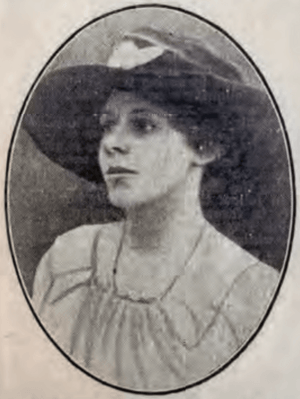Maud Crofts facts for kids
Quick facts for kids
Maud Crofts
|
|
|---|---|
 |
|
| Born |
Maud Isabel Ingram
16 June 1889 |
| Died | 18 January 1965 (aged 75) |
| Nationality | United Kingdom |
| Education | Girton College |
| Occupation | Solicitor |
| Employer | Trower, Still and Keeling |
| Known for | first woman lawyer in the UK |
| Spouse(s) | John Cecil Crofts |
| Children | two |
Maud Isabel Ingram (born 16 June 1889) later became Maud Isabel Crofts. She was a very important person in British history. She was the first woman in the United Kingdom to train as a solicitor. She also became the first woman solicitor after a long effort from 1913 to 1923. Another woman, Ivy Williams, was the first to become a barrister in 1922.
Contents
Early Life and Education
Maud Crofts was born in 1889 in Brighton, England. Her father, Thomas Lewis Ingram, was a barrister, which is a type of lawyer. Maud went to Girton College at Cambridge University. There, she studied History and Law. She was also a talented tennis player and earned a 'Blue' for her university team. Even though she studied law, women were not allowed to become lawyers at that time.
Fighting for Change: The Lawsuit
In 1913, Maud Crofts and three other women decided to take action. They started a legal case to make the Law Society allow women to take its exams. The other women were Lucy Nettlefold, Karin Costelloe, and Gwyneth Bebb.
Gwyneth Bebb was the main person named in the court case, called Bebb v. The Law Society. The case was heard in July 1913. The judge, Mr Justice Joyce, was not in favour of their request. The Solicitors Act 1843 said that words like "he" or "him" could also mean "she" or "her." However, the judge said that there was no past example of a woman becoming a lawyer. He believed only the government could make such a big change.
The women tried to appeal this decision in December 1913, but they lost again. Even though they lost in court, the four women kept fighting. They used newspapers to share their story and gather support. Maud Crofts spent a lot of time on this campaign while also working in a law office.
A New Law and a Historic First
Most British newspapers supported the women's fight. Their case helped the bigger movement to allow women into the legal profession. Finally, in 1919, a new law was passed. It was called the Sex Disqualification (Removal) Act 1919. This law made it legal for women to become lawyers.
There was some talk in the newspapers about whether male barristers would go easy on female barristers in court. Maud Crofts (then Ingram) famously said that if women were "intellectually incapable," it would be "carrying chivalry rather too far to refuse to permit them to expose themselves as failures."
In 1919, Maud Crofts became the first woman to start her training as a solicitor. She began working at a law firm called Trower, Still and Keeling. Gwyneth Bebb, who was the main person in the court case, was expected to be the first woman lawyer. Sadly, she passed away in 1921.
Maud Crofts made history in January 1923. She became the first woman to officially qualify as a solicitor in England. She had completed her training and passed her exams after the law changed. Out of the four women who started the legal case, only Maud Crofts became a lawyer. Lucy Nettlefold went into business, and Karin Costelloe became a psychoanalyst.
After becoming a solicitor, Maud Crofts became a partner in a law firm called Crofts, Ingram and Wyatt & Co. In 1925, she wrote a book called Women Under English Law. It was published by the National Council of Women of Great Britain.
Family Life
Maud married a solicitor named John Cecil Crofts in 1922. They had two children together. They lived in Wimbledon, a part of London. Maud Crofts passed away in London in 1965.

